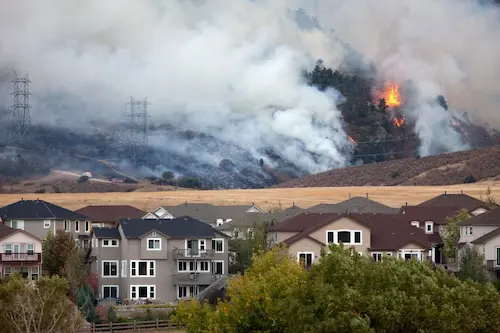How to meet California fire safety building codes when rebuilding

Rebuilding after a fire or upgrading a structure to comply with California’s stringent fire safety codes is a crucial step in ensuring the safety of occupants and reducing the risk of future disasters.
The state has some of the most rigorous fire safety regulations in the country, particularly in fire-prone areas.
Understanding these codes and implementing best practices is essential for compliance and long-term resilience.
Understanding California Fire Codes
California’s fire safety regulations are primarily governed by the California Fire Code (CFC) and the California Building Code (CBC). These codes outline requirements for fire-resistant materials, defensible space, emergency access, and sprinkler systems. Additionally, local jurisdictions may have stricter regulations, particularly in Wildland-Urban Interface (WUI) zones, where properties are at higher risk of wildfires.
Key agencies involved in fire safety regulation include:
- California Department of Forestry and Fire Protection (CAL FIRE)
- Local fire departments and building authorities
- California State Fire Marshal’s Office
- Use Fire-Resistant Materials
One of the most effective ways to enhance fire safety is by using fire-resistant building materials. California’s building codes require:
- Class A Roofing Material: Materials such as metal, slate, and fire-retardant-treated wood help prevent fire spread.
- Fire-Rated Siding: Non-combustible materials like fiber cement, stucco, or masonry provide better protection.
- Tempered Glass Windows: Double-pane or tempered glass windows offer better resistance against heat and flames.
- Ember-Resistant Vents: Special vent covers prevent embers from entering attics and crawl spaces.
- Create Defensible Space around the Property
California’s Public Resources Code (PRC) 4291 requires property owners in fire-prone areas to maintain defensible space around their structures. This involves:
- Clearing at least 100 feet of defensible space around buildings.
- Removing dead vegetation, dry leaves, and combustible debris.
- Keeping trees and shrubs trimmed and maintaining proper spacing between them.
- Using fire-resistant landscaping, such as drought-tolerant plants and gravel pathways.
- Install Fire Sprinklers and Detection Systems
California law mandates automatic fire sprinkler systems in all new residential and commercial buildings. Additionally:
- Smoke Alarms: Must be installed in every bedroom, hallway, and common area.
- Carbon Monoxide Detectors: Required in homes with gas appliances or attached garages.
- Fire Extinguishers: Recommended in easily accessible locations.
- Water Supply for Firefighting: Adequate water sources such as hydrants or water storage tanks should be available, particularly in rural areas.
- Maintain Fire-Safe Access Roads and Exits
Emergency responders must have clear and safe access to properties. California codes require:
- Driveways to be at least 10 feet wide, with turnarounds for fire trucks if necessary.
- Road signs to be clearly visible and made from non-combustible materials.
- Fire-resistant house numbers those are at least 4 inches tall and highly visible.
- Multiple exit routes in larger buildings to ensure safe evacuation.
- Upgrade Electrical and HVAC Systems
Faulty electrical systems are a leading cause of fires. To comply with California codes:
- Use metal conduit or fire-resistant cable covers.
- Install arc-fault circuit interrupters (AFCIs) to prevent electrical fires.
- Ensure HVAC systems have fire dampers to prevent fire spread through ductwork.
- Regularly inspect and maintain electrical and heating systems.
- Follow WUI Code Requirements
For homes in Wildland-Urban Interface (WUI) zones, stricter fire safety measures are required. These include:
- Ignition-Resistant Construction: Walls, decks, and fences must be built using fire-resistant materials.
- Eave Protection: Boxed-in or enclosed eaves to prevent ember intrusion.
- Decking Requirements: Non-combustible or fire-resistant deck materials must be used.
- Garage Door Seals: Must be tight-fitting to prevent embers from entering.
- Obtain the Necessary Permits
Before rebuilding, property owners must obtain the appropriate permits from their local building department. The process typically includes:
- Submitting detailed building plans that comply with fire safety codes.
- Passing fire inspections before, during, and after construction.
- Adhering to any additional regulations set by homeowners’ associations or local fire agencies.
- Educate Occupants on Fire Safety
Fire preparedness is just as important as fire-resistant construction. Property owners should:
- Develop and practice fire escape plans with all occupants.
- Keep emergency contact numbers and evacuation routes easily accessible.
- Conduct regular fire drills and safety checks.
Meeting California fire safety building codes when rebuilding requires careful planning, adherence to strict regulations, and implementation of best practices.
By using fire-resistant materials, creating defensible space, upgrading fire protection systems, and ensuring proper access, property owners can significantly reduce fire risks and enhance the safety of their structures.
Staying informed about state and local codes is essential to maintaining compliance and protecting both lives and property from fire hazards.
